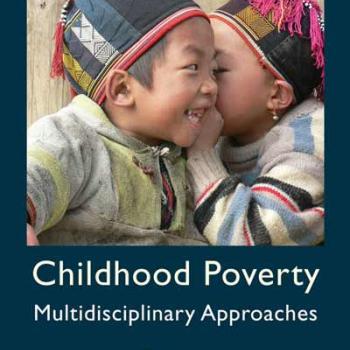Publication Information

The main objectives of this chapter are to investigate sustained consequences of early childhood malnutrition and recovery from this condition, [q1] and to assess the long-term effects of pre-natal and post-natal economic shocks on child health and nutrition, using standardized height measurements. Further objectives are to examine the relative significance of area-wide (co-variant) and idiosyncratic economic shocks for the growth of 5-year-old children and to identify implications for the social protection policy of Ethiopia. We employed multivariate analysis using two rounds of Young Lives Survey data on the Younger Cohort, who were around 1 year old in Round 1 and 5 years old in Round 2. Both Round 1 (conducted in the last quarter of 2002) and Round 2 data (collected in the last quarter of 2006) contain information on height for age of the 1-year-old and 5-year-old children, respectively, and on the incidence of economic shocks that hit households up to five years before the surveys.
Reference;
Woldehanna, Tassew (2012) 'Do Economic Shocks Have a Sustained Effect on the Height of Five-year-old Children? Evidence from Rural and Urban Ethiopia', in Jo Boyden and Michael Bourdillon (eds) Childhood Poverty. Multidisciplinary Approaches (pp.200-217). Basingstoke: Palgrave Macmilllan.

The main objectives of this chapter are to investigate sustained consequences of early childhood malnutrition and recovery from this condition, [q1] and to assess the long-term effects of pre-natal and post-natal economic shocks on child health and nutrition, using standardized height measurements. Further objectives are to examine the relative significance of area-wide (co-variant) and idiosyncratic economic shocks for the growth of 5-year-old children and to identify implications for the social protection policy of Ethiopia. We employed multivariate analysis using two rounds of Young Lives Survey data on the Younger Cohort, who were around 1 year old in Round 1 and 5 years old in Round 2. Both Round 1 (conducted in the last quarter of 2002) and Round 2 data (collected in the last quarter of 2006) contain information on height for age of the 1-year-old and 5-year-old children, respectively, and on the incidence of economic shocks that hit households up to five years before the surveys.
Reference;
Woldehanna, Tassew (2012) 'Do Economic Shocks Have a Sustained Effect on the Height of Five-year-old Children? Evidence from Rural and Urban Ethiopia', in Jo Boyden and Michael Bourdillon (eds) Childhood Poverty. Multidisciplinary Approaches (pp.200-217). Basingstoke: Palgrave Macmilllan.

